
Aikido [aikiꜜdoː] is a modern Japanese martial art developed by Morihei Ueshiba as a synthesis of his martial studies, philosophy and religious beliefs. Ueshiba's goal was to create an art that practitioners could use to defend themselves while also protecting their attacker from injury. Aikido is often translated as "the way of unifying (with) life energy" or as "the way of harmonious spirit".

The Canterbury Tales is a collection of 24 stories that runs to over 17,000 lines written in Middle English by Geoffrey Chaucer between 1387 and 1400. In 1386, Chaucer became Controller of Customs and Justice of Peace and, in 1389, Clerk of the King's work. It was during these years that Chaucer began working on his most famous text, The Canterbury Tales. The tales are presented as part of a story-telling contest by a group of pilgrims as they travel together from London to Canterbury to visit the shrine of Saint Thomas Becket at Canterbury Cathedral. The prize for this contest is a free meal at the Tabard Inn at Southwark on their return.
The executive is the organ exercising authority in and holding responsibility for the governance of a state. The executive executes and enforces law.
In physics, a fluid is a substance that continually deforms (flows) under an applied shear stress, or external force. Fluids are a phase of matter and include liquids, gases and plasmas. They are substances with zero shear modulus, or, in simpler terms, substances which cannot resist any shear force applied to them.
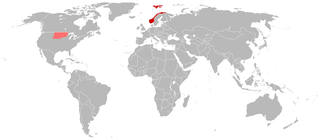
Norwegian is a North Germanic language spoken mainly in Norway, where it is the official language. Along with Swedish and Danish, Norwegian forms a dialect continuum of more or less mutually intelligible local and regional varieties, and some Norwegian and Swedish dialects, in particular, are very close. These Scandinavian languages, together with Faroese and Icelandic as well as some extinct languages, constitute the North Germanic languages. Faroese and Icelandic are hardly mutually intelligible with Norwegian in their spoken form because continental Scandinavian has diverged from them. While the two Germanic languages with the greatest numbers of speakers, English and German, have close similarities with Norwegian, neither is mutually intelligible with it. Norwegian is a descendant of Old Norse, the common language of the Germanic peoples living in Scandinavia during the Viking Era.
The prisoner's dilemma is a standard example of a game analyzed in game theory that shows why two completely rational individuals might not cooperate, even if it appears that it is in their best interests to do so. It was originally framed by Merrill Flood and Melvin Dresher while working at RAND in 1950. Albert W. Tucker formalized the game with prison sentence rewards and named it "prisoner's dilemma", presenting it as follows:
Two members of a criminal gang are arrested and imprisoned. Each prisoner is in solitary confinement with no means of communicating with the other. The prosecutors lack sufficient evidence to convict the pair on the principal charge, but they have enough to convict both on a lesser charge. Simultaneously, the prosecutors offer each prisoner a bargain. Each prisoner is given the opportunity either to betray the other by testifying that the other committed the crime, or to cooperate with the other by remaining silent. The offer is:
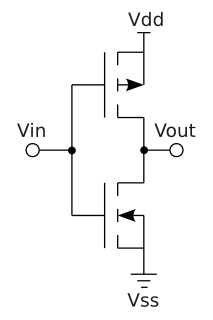
Complementary metal–oxide–semiconductor (CMOS) is a technology for constructing integrated circuits. CMOS technology is used in microprocessors, microcontrollers, static RAM, and other digital logic circuits. CMOS technology is also used for several analog circuits such as image sensors, data converters, and highly integrated transceivers for many types of communication. Frank Wanlass patented CMOS in 1967 while working for Fairchild Semiconductor.

Cardamom, sometimes cardamon or cardamum, is a spice made from the seeds of several plants in the genera Elettaria and Amomum in the family Zingiberaceae. Both genera are native to the Indian subcontinent and Indonesia. They are recognized by their small seed pods: triangular in cross-section and spindle-shaped, with a thin, papery outer shell and small, black seeds; Elettaria pods are light green and smaller, while Amomum pods are larger and dark brown.

The terms A-side and B-side refer to the two sides of 78, 45, and 331⁄3 rpm phonograph records, or cassettes, whether singles, extended plays (EPs), or long-playing (LP) records. The A-side usually featured the recording that the artist, record producer, or the record company intended to receive the initial promotional effort and then receive radio airplay, hopefully, to become a "hit" record. The B-side is a secondary recording that has a history of its own: some artists released B-sides that were considered as strong as the A-side and became hits in their own right. Others took the opposite approach: producer Phil Spector was in the habit of filling B-sides with on-the-spot instrumentals that no one would confuse with the A-side. With this practice, Spector was assured that airplay was focused on the side he wanted to be the hit side.

The automotive industry is a wide range of companies and organizations involved in the design, development, manufacturing, marketing, and selling of motor vehicles.
It is one of the world's largest economic sectors by revenue. The automotive industry does not include industries dedicated to the maintenance of automobiles following delivery to the end-user, such as automobile repair shops and motor fuel filling stations.
The pronoun you is the second-person personal pronoun, both singular and plural, and both nominative and oblique case in Modern English. The oblique (objective) form, you, functioned previously in the roles of both accusative and dative, as well as all instances following a preposition. The possessive forms of you are your and yours. The reflexive forms are yourself (singular) and yourselves (plural).
Circa – frequently abbreviated c., ca. or ca and less frequently circ. or cca. – signifies "approximately" in several European languages and as a loanword in English, usually in reference to a date. Circa is widely used in historical writing when the dates of events are not accurately known.
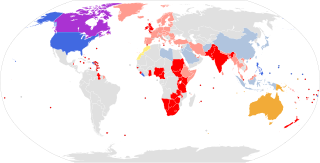
Many of the differences between American and British English date back to a time when spelling standards had not yet developed. For instance, some spellings seen as "American" today were once commonly used in Britain and some spellings seen as "British" were once commonly used in the United States. A "British standard" began to emerge following the 1755 publication of Samuel Johnson's A Dictionary of the English Language, and an "American standard" started following the work of Noah Webster and in particular his An American Dictionary of the English Language, first published in 1828.
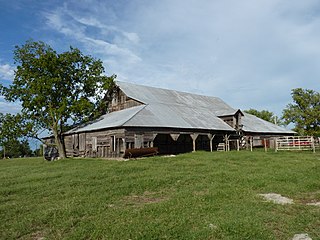
This is a list of properties and historic districts in Oklahoma that are designated on the National Register of Historic Places. Listings are distributed across all of Oklahoma's 77 counties.
The Virginia Cavaliers men's basketball program represents the University of Virginia in the Atlantic Coast Conference in Division I of the NCAA. The team is coached by Tony Bennett. Since 2006 the team has played at John Paul Jones Arena, an on-campus arena on the North Grounds of the university, in front of 14,593.
The horses of the Æsir are listed twice.

In mathematics, a rational number is any number that can be expressed as the quotient or fraction p/q of two integers, a numerator p and a non-zero denominator q. Since q may be equal to 1, every integer is a rational number. The set of all rational numbers, often referred to as "the rationals", the field of rationals or the field of rational numbers is usually denoted by a boldface Q ; it was thus denoted in 1895 by Giuseppe Peano after quoziente, Italian for "quotient".
The Good Friday Agreement (GFA) or Belfast Agreement was a major political development in the Northern Ireland peace process of the 1990s. Northern Ireland's present devolved system of government is based on the agreement. The agreement also created a number of institutions between Northern Ireland and the Republic of Ireland, and between the Republic of Ireland and the United Kingdom.
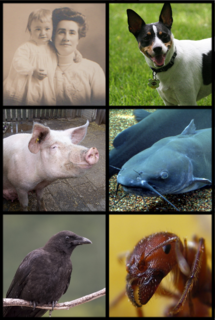
An omnivore is an animal that has the ability to eat and survive on both plant and animal matter. Obtaining energy and nutrients from plant and animal matter, omnivores digest carbohydrates, protein, fat, and fiber, and metabolize the nutrients and energy of the sources absorbed. Often, they have the ability to incorporate food sources such as algae, fungi, and bacteria into their diet.














